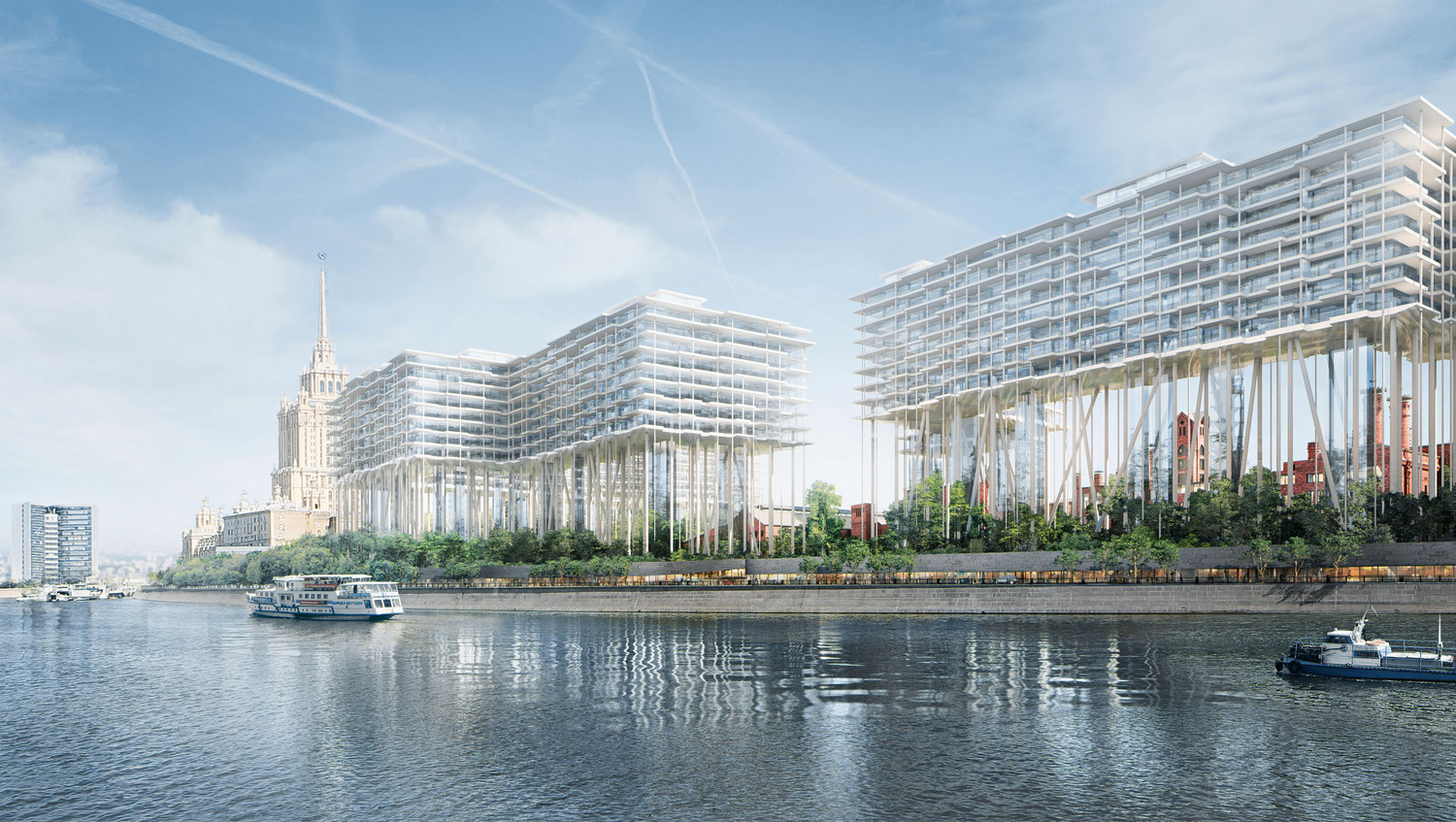| Client | Capital Group, Moscow, Russia |
| Architecture | Herzog & de Meuron (Executive Architect: Apex Project Bureau, Moscow, Russia) |
| Structural Engineering | International Consultant: Schnetzer Puskas International, Basel; Local Consultant: Apex Project Bureau, Moscow, Russia |
| Planning | Since 2017 |
| Status | In progress |
The Badaevskiy Brewery is located in central Moscow next to the Moscow River. The existing masonry buildings were built at the end of the 19th century and have received cultural heritage status. The found structures and the history of the site informed and inspired the architects’ urbanistic and architectural interventions: the elevation of the new building, as well as the spatial continuity of the park and gardens beneath. Along with the residential blocks, the surviving clusters of 19th century industrial buildings are set to be renovated and repurposed.
The two elevated apartments blocks (building west and building east) have 8 storeys each, except for the western part of the building west and the eastern part of building east which comprise 18 storeys. The basement shared by both buildings is provided with areas from two to three floors. The 8-storey buildings are lifted more than 37 meters in the air to enable a visual connection between the former factory area and the river. The elevated structures follow the outlines of the heritage structures and open the plot for an extensive green area, creating a new public park for the neighbourhood. The two volumes touch the ground only at both ends of the plot. Vertical access to the elevated buildings is provided by an elevator running in a shaft whose load bearing structure is formed by a composite frame structure strutted with steel tension rods.
The bottom slab of the elevated part is designed as a composite steel concrete slab with a holorib-panel as lost formwork and will be used as an installation platform for the upper concrete floors. The composite slab itself is resting on a grid of steel trusses whose bottom chords are cladded. The space between the top and the bottom chord of the truss is used for main parts of the MEP. The upper floors of the elevated buildings are equipped with reinforced concrete slabs. All levels besides the composite slab are provided with concrete bubble decks.
The 8 storeys rest on vertical composite columns with a length of about 37.8 meters. The composite columns are fixed on the bottom and top end in order to keep their dimensions slim and control the buckling length. The horizontal stability of the entire set of buildings is achieved by using transversal and longitudinal bracing diagonals which are also fixed in walls in the basement.
All basement slabs are formed by reinforced concrete slabs with mushroom caps to prevent the slabs from punching. The buildings rest on a foundation slab and the soil below will be improved by a dense grid of ram piles in order to control the huge loads and to prevent big differential settlements.
| Client | Capital Group, Moscow, Russia |
| Architecture | Herzog & de Meuron (Executive Architect: Apex Project Bureau, Moscow, Russia) |
| Structural Engineering | International Consultant: Schnetzer Puskas International, Basel; Local Consultant: Apex Project Bureau, Moscow, Russia |
| Planning | Since 2017 |
| Status | In progress |

